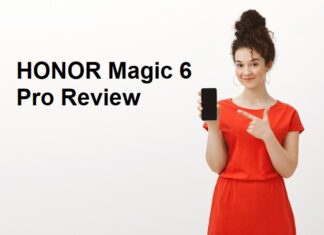Brands can increase their awareness and drive traffic to their sites, gain new followers on social media, and even increase sales through influencer marketing. This strategy has been so successful that influencer marketing has grown to be a $13.8 billion industry.
However, if you don’t know how to do influencer marketing properly, you might have some doubts about how to go about your campaign. If this is your case, then you’re in the right place. Here are 10 tips to make your influencer marketing campaigns go more smoothly.
1. Define a clear, actionable goal
Table of Contents
A campaign cannot start if there is no clear goal. The goal should be actionable, which means there are specific steps you can take in order to achieve it.
You should plan your goal and strategy now because it will influence the decisions you make throughout the campaign. Once you have your goal set, choose a few key performance indicators (KPIs), to help you monitor your progress.
For example, for branding campaigns, you might want to track impressions, clicks or links to your site. You can monitor these KPIs throughout your campaign to see how well you achieve your goal.
2. Identify the social network on which your target audience spends their time
Understanding your target audience is key to success in any type of marketing. For influencer marketing, it’s no different. You must know who you want to affect and how you intend to reach them.
You should do market research to determine the buyer personas of your target audience if you haven’t ever done it. With the data you have on your target audience, consider which social networks will be most helpful in reaching them. This is the network where you need to search for influencers in order to launch your campaign.
As an example, TikTok influencers are the best way to reach teenagers. TikTok has many Gen-Zers, so its influencers can help connect you with that audience. For other age groups, another network may be a better fit. And don’t forget to look into how geography affects your campaign. Certain networks are banned in some countries, for example.
3. Get to know the different levels and tiers of influencers
Influencers are not all created equal. They can be broken down by the number of followers they have. An influencer’s level of influence will impact the amount they charge for their services.
These are the five tiers:
- Nano influencers, 1-5K followers
- Micro influencers, 5-50K followers
- Medium influencers, 50-100K followers
- Macro influencers, 100K-1M followers
- Mega influencers, 1M+ followers
Each tier comes with its own set of advantages and disadvantages. Mega influencers have the largest reach, but low engagement rates. Contrarily, nano and micro-influencers have very small audiences, but high engagement rates.
Another type of influencer is the KOL, or key opinion leader, which exists outside the tiers. They are usually regarded as experts within their chosen industry and their reputations can also be backed up by years of professional experience and education. Think of Oprah. KOLs’ influence goes far beyond social media, so they don’t have a specific follower threshold like the other tiers.
4. Get to know the influencer incentive
There are two ways to make influencers pay: fees or products. The products are gifts that your brand gives away, while the fees you pay influencers to create content are monetary payments.
Fees could be flat as in a one time fee for a piece of content. Or, they can work like commissions, where influencers get a specified percentage or amount per acquisition.
Collaborations based on free products are often possible with micro and nano influencers. But as you progress into the medium range, expect to give free products and pay fees. And KOLs might charge you differently for your collaboration. Oprah for example often mentions a product and then gives everyone in her TV audience one to take home.
5. Analyze performance and influencer content
It is not enough to simply choose the most attractive profiles when looking for influencers. You must dig deeper to analyze their content, performance and other factors.
Check to see if their content is in line with your brand. Do they share the same values and beliefs as you? Is their style compatible with your brand’s? Make sure their voice can convey the message your brand is trying to communicate.
You should also analyze their profile performance. Examine their follower growth and engagement rate over time. Also, verify their authenticity. You should be on the lookout if there is anything unusual. This could be an indication that the influencer purchased fake followers or fake interactions.
6. Be creative and open-minded when it comes to content
The possibilities of what you can share with influencers are endless. Photos, video, live streams, podcasts…whatever your interests are, there’s a way.
Look at your target audience again to determine what content resonates with them. Think of some ideas and then listen to what influencers say. They might have an amazing idea that you didn’t think of. Keep an open mind and be open to their recommendations.
7. Reach out to twice as many influencers
You might not get a reply from everyone when you reach out to influencers. Some people won’t even open your emails. Therefore, you should reach at least double the influencers that you are looking to hire for your campaign.
Email is the most commonly used method to reach out for collaborations. But if you can’t find an influencer’s email, you can reach them through social media. Send them a DM and let them know that you wish to connect.
8. Decide if a contract is necessary (or not)
Contracts aren’t always necessary in all influencer relationships. In the end, it all depends on how you pay influencers. If they’re receiving free products,and no cash payments are required, a contract isn’t necessary. However, a contract may be necessary if the product is expensive (e.g. a new car).
If you are paying fees, it is important to include the collaboration terms in a contract. This influencer contract template can be downloaded for free and is particularly helpful if you’re not sure where to start with influencer contracts. Simply modify the details to match your collaboration. Talk to a lawyer if you have any questions about the terms of the agreement.
9. Allow influencers to create however they wish
It’s acceptable to layout publication guidelines. Talk with influencers about:
- Hashtags, mentions and/or discount codes you want them to use
- Aspects of your product or brand that you would like to be highlighted
- Specific aesthetic requirements to maintain your branding
- Disclosure requirements and how to comply with them
That said, giving influencers the freedom to create their content is a good thing. They know their followers best and have grown their audience. This makes them the best to communicate your brand’s message with their audience. So give them the artistic license to do just this.
10. Be a relative success measure.
All the results of your campaign must be collected and analyzed at the end. Some people become obsessed with comparing their campaign’s results to other campaigns or competitors’ standings. But you can only compete with your own success.
One way to determine success is to see if the rewards outweigh the costs. If an influencer was paid $200 to promote the sale of your product and they generated $300 in revenues, that would be a success.
Another way to view success is to see if you surpassed your initial expectations. Let’s take an example. A $100 fee was paid to an influencer for content that featured your brand. The expectation was that they would get approximately 20,000 impressions. The CPM (cost of 1,000 impressions or cost per mille) would then be $5. CPM Meaning – Cost Per Mile, or cost per 1,000 impressions.
But, let’s say that the influencer gets 30,000 impressions. Your CPM is now 3.33. That’s lower than what was originally projected. This is another success!
Conclusion
There are many moving pieces to an influencer marketing campaign. These campaigns require lots of planning and organization as well as continuous monitoring and analysis. Hopefully, these 10 tips have made the process a bit simpler.










